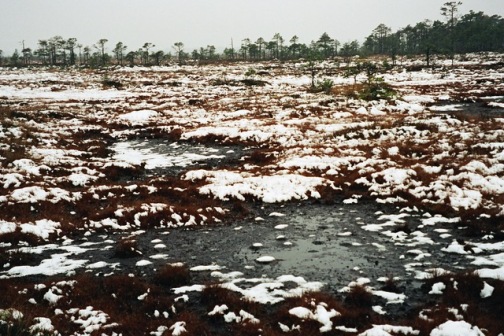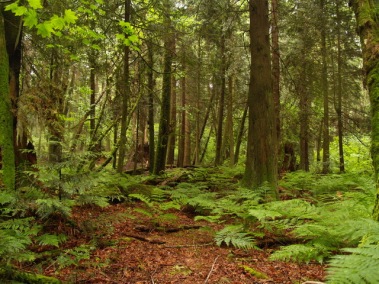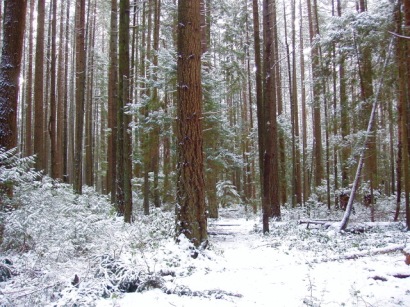LANGUAGE: THE KEY TO OUR PAST AND PRESENT

Dr. Pille Bunnell
By Eileen Chen
Photo courtesy of Pille Bunnell
*Permission to reprint granted by the Vancouver Arts Colloquium Society
What does an intersection between poetry and science mean? Does it relate to poems that talk about science or scientists that speak in verse? These were the questions that plagued me when I was preparing an interview with Dr. Pille Bunnell – an ecologist and cyberneticist – to discuss the topic of integrating poetry and science, as well as her experiences and fields of study.
Before diving into discussions of what systems ecology and cybernetics are, I had the pleasure of hearing Dr. Bunnell relate a beautifully personal tale. In the year 2002, Dr. Bunnell attended a course at the University of Tartu during a visit to her mother country, Estonia, which she left as a refugee when only eight months old. There, she joined a field trip to an ancient raised bog, where the peat moss had built up several meters above the surrounding area. It was a chilly November day, with a smatter of snow on the ground. After receiving a bog-walking lesson, she had a chance to explore the ancient landscape herself. Pausing to look around, she was suddenly overcome with a striking sense of awe and familiarity: “I am home!” The emotional intensity of this experience was evident, even when retelling her story.
After long reflection on that impactful experience, Dr. Bunnell came to the conclusion that language links people with their ancestry through its connection with the land. I was surprised to see language brought into the equation like this, but through Dr. Bunnell’s explanation of how the grammar, intonation, and flow of language arises from how people relate within the landscapes they live in, I eventually became convinced. To apply linguistics theory to my understanding of this, languages diverged from common origins into a myriad of new sound systems as our ancestors migrated to different lands. From different environments, different cultures are born. Keiko – the chair of VACS – chimed in with the example that there are many more words to describe scents and seasonal changes in Japanese than there are in English, which geographical factors contribute to.
“This is also why we are drawn to poetry,” Dr. Bunnell added. According to Dr. Bunnell, beauty exists regardless of language, but language has the power to evoke and communicate beauty through poetic expression. With language’s connection to place, it is not difficult to see why people have been composing pastorals and haikus since ancient times. Language reminds us of our profound link with our land, and doubles the impact by also enabling us to express our response to the beauty of what’s right in front of us.
According to Dr. Bunnell, living in language has many implications besides the more obvious ones of naming things and enabling us to converse with each other. In a world consisting of various interconnected “systems”, language is an adisciplinary mechanism that simplifies all these systems and entrains meaning. “So what exactly are systems?” I had to ask. In return, I was asked by Dr. Bunnell to give her my definition of a “social system.” I suddenly found myself at loss for words, despite referring to the term so frequently in academic papers. Yet, judging from Dr. Bunnell’s smile, this was the expected response. “You can’t define it, but you know it exists,” she said. Where does a social system start, and what are its boundaries? If it includes the government and the people, who does it not include, and how far does this system extend? To give a simpler example, Dr. Bunnell took a sip of her mint tea and asked, “When does the tea I drink turn into me?”
This was how I finally came to conceptualize the power of language. I also observed that Dr. Bunnell was truly a master of it. Through the usage of precise vocabulary as well as elegant metaphors and analogies, she was able to clarify one abstract concept after another without having to pause and think for more than a few seconds. It occurred to me that I didn’t have to look for special instances in which science and poetry intersect – poetry exists naturally within scientific explanations.
From her patient explanations, I also learned that the discipline of cybernetics that Dr. Bunnell studies is not about AI and futuristic technology as depicted in dystopian novels, but about the steering of humans and the world around them. Dr. Bunnell explained that the term “cybernetics” only came to be associated with robots as it is much easier to control than to “steer”, and though we can control machines, humans are autonomous beings. The study systems, including living systems and languaging system among other things, falls under the category of cybernetics. Dr. Bunnell herself has been in the field for over two decades, before which she focused primarily on ecology. Inspired by a childhood love for nature, she spent a considerable amount of time studying zoology, first as a PhD student in Berkeley then developing simulation models for various ecosystems of concern, including the Arctic tundra. It was her encounter with Dr. Humberto Maturana, for whom she would later edit a book entitled The Origin of Humanness in the Biology of Love, that inspired her to cultivate a lasting passion for cybernetics. After hearing Dr. Bunnell discuss ecological topics at length, however, I decided that these two fields are clearly connected.
 The natural world also consists of interconnected systems; colonies, species, and ecosystems are only some examples of how things can be categorized. Like humans, some varieties of plants also have their own home landscapes. Furthermore, some organisms, such as fungi, serve as a king of forest internet, as they communicate through networks that connect with the roots of plants. The way human language evolved from ancient origins has a similar form as the evolution of animal and plant species from common roots. Or rather, roots remain implicit in our DNA, as Dr. Bunnell pointed out that we humans share about 70 percent of common genes with the wasabi-flavoured peas on the table.
The natural world also consists of interconnected systems; colonies, species, and ecosystems are only some examples of how things can be categorized. Like humans, some varieties of plants also have their own home landscapes. Furthermore, some organisms, such as fungi, serve as a king of forest internet, as they communicate through networks that connect with the roots of plants. The way human language evolved from ancient origins has a similar form as the evolution of animal and plant species from common roots. Or rather, roots remain implicit in our DNA, as Dr. Bunnell pointed out that we humans share about 70 percent of common genes with the wasabi-flavoured peas on the table.
 “The Earth has existed for billions of years, while humans have only been around for the very last bit,” Dr. Bunnell said. It doesn’t mean that we are not worthy of being here, but that our existence emerged from a long line of biological and cultural history. “We should appreciate the gift of our very long past,” Dr. Bunnell said resolutely.
“The Earth has existed for billions of years, while humans have only been around for the very last bit,” Dr. Bunnell said. It doesn’t mean that we are not worthy of being here, but that our existence emerged from a long line of biological and cultural history. “We should appreciate the gift of our very long past,” Dr. Bunnell said resolutely.
What role does our languaging ability play in all of this? It is in our nature to constantly build on our heritage of systems, and our use of language is one crucial way for us to do that. The act of communication makes intercultural exchange possible. As humans, we are naturally drawn to others for both their similarities and differences. We carry our own cultural schemas and identities, but also change certain habits when immersed in different cultures. This is perhaps why various artists in a city as diverse as Vancouver are drawn to gatherings such as Keiko’s AIR Salon, where they have the opportunity to build a sense of community by sharing their stories and experiences. Language itself is just as fluid a thing. As we mingle to create a rich cultural mosaic, our language is borrowing new vocabulary from different places and adapting to changing environments.
In our complex world of systems, language allows us to make sense of our surroundings and shape our identities. Its accuracy can never be exact – as to put anything into words involves simplifying, generalizing, and assimilating – but it is the surest way for us to make sense of the world around us and convey what we know to others. As Dr. Bunnell sums it up rather poetically: “In practice, languaging enables us to remain in a dance with ambiguity” (“Dancing with Ambiguity” 2015).






